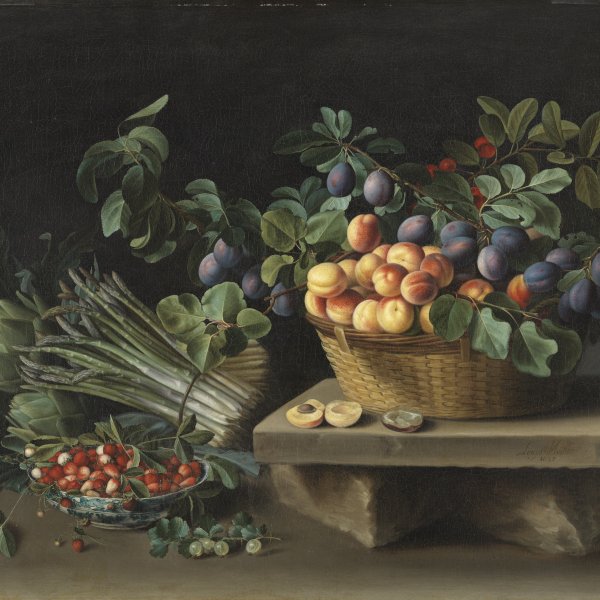Louise Moillon
Louise Moillon was born in Paris in 1610. She was one of seven children born to her father, the landscape and portrait painter Nicolas Moillon, and her mother, Marie Gilbert. The family, who were Protestants, lived in the Pont Notre Dame area of the city. Nicolas Moillon dealt in paintings in the fair held at the church of Saint-Germain-des-Prés, whose Confraternity included a large number of Dutch artists. Following Moillon's death in 1619, his widow married the still-life painter François Garnier, who was also a picture dealer. Two more children were born from this marriage. When Marie Gilbert died in 1630 the inventory of her possessions included a series of paintings by her daughter Louise who was twenty years old at that point. In 1640 Louise married the timber merchant Etienne Girardot de Chancourt with whom she had three children. For French Protestants the results of the Edict of Nantes were highly damaging: one of Louise's children was obliged to convert to Catholicism, while the other two fled to London. Louise died in 1696.
Most of Louise Moillon's signed paintings are dated between 1629 and 1637, while there is also a work of 1641 painted in collaboration with Pieter van Boekel (Pierre van Boucle) and Jacques Linard which was a large composition with fruits and flowers. Some of her later works date from 1674. The high esteem in which her work was held is demonstrated by the fact that in 1639 Charles I of England had five fruit pieces by the artist.
The inventory of the possessions of Louise Moillon's mother mentions thirteen paintings and nine unfinished works. We also know of paintings dated between 1629 and 1630 which do not appear in the inventory. This implies that Louise must have been a dedicated and prolific artist from an early date. The inventory supplies a great deal of information. From the descriptions the paintings would all seem to be simple depictions of fruit with the inclusion of an occasional flower, and a painting of winkles and fruit. Flower pieces from this period by Moillon are unknown, but a later inventory mentions two paintings of flowers and fruit. The paintings are on panels of a standard price and dimensions and all have an ebony or pear wood frame, including the unfinished works.
These are preliminary studies, some perhaps being "sketches" for finished works. It would seem that the artist worked on a series of paintings simultaneously. One is referred to as being an original and a copy, perhaps signifying a signed painting and an unsigned version by the artist's own hand. There are also versions of another painting.
The identity of Louise Moillon's teacher is unknown. In the literature it is generally stated that her step-father taught her to paint. Only two signed works by Garnier are known, dated 1637 and 1644, but from these one might rather deduce the existence of a pupil of Louise, whose family circumstances are unknown. Garnier was possibly most noted for his activities as a picture dealer. If Garnier was his step-daughter's teacher, she soon surpassed him. Looking at her compositional methods, style and subject-matter, the possibility of Jacques Linard seems more likely, and there is also a certain similarity with René Nourisson. Another obvious influence is that of the Antwerp painter Jacob van Hulsdonck. Furthermore, attributing the large body of unsigned fruit paintings by Paris and other French artists of this date is not always easy. There are considerable similarities between the work of Linard, Nourisson, P. du Pré, Augustin Bouquet and De Mélezet, and that of Garnier and Moillon.
Sam Segal





